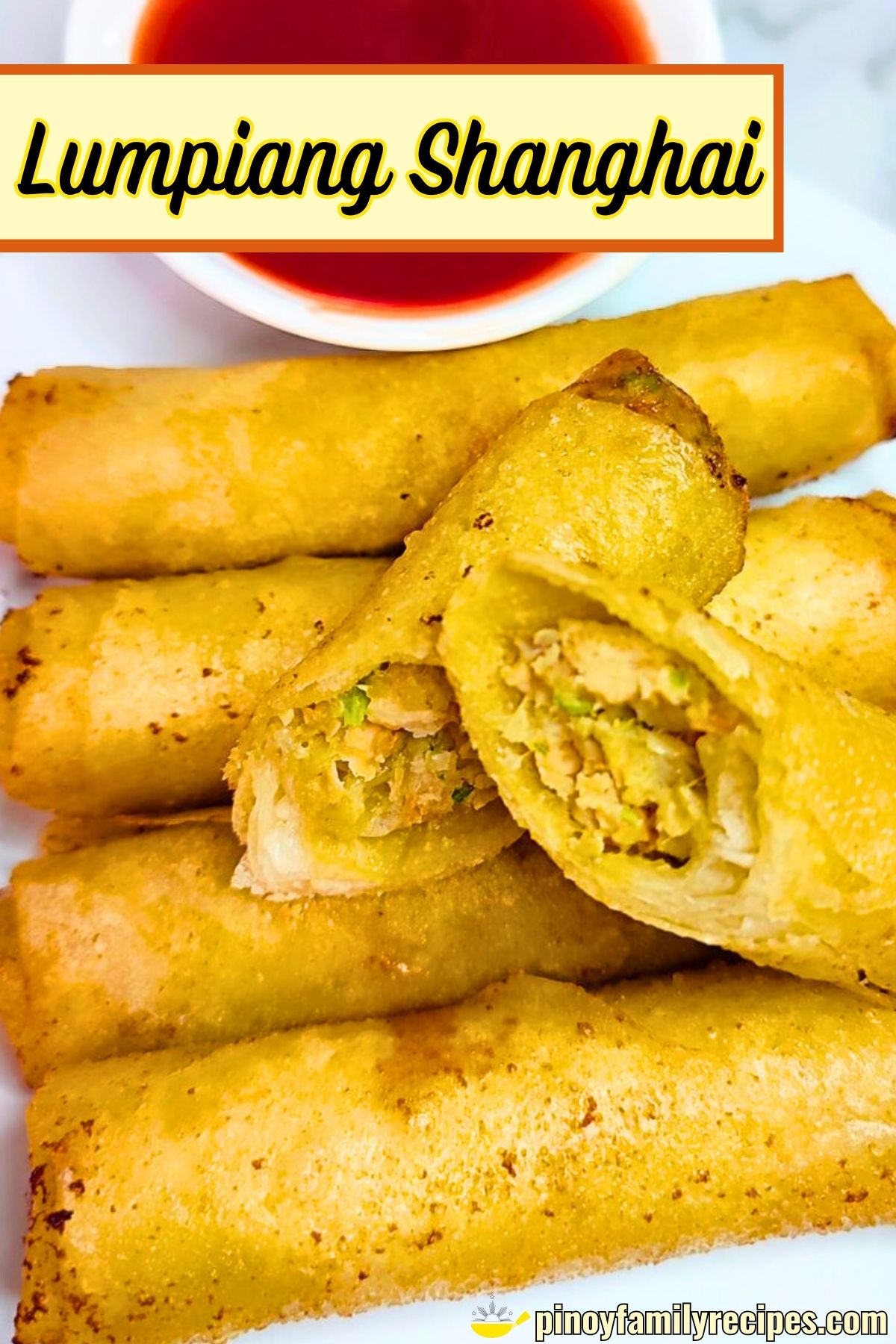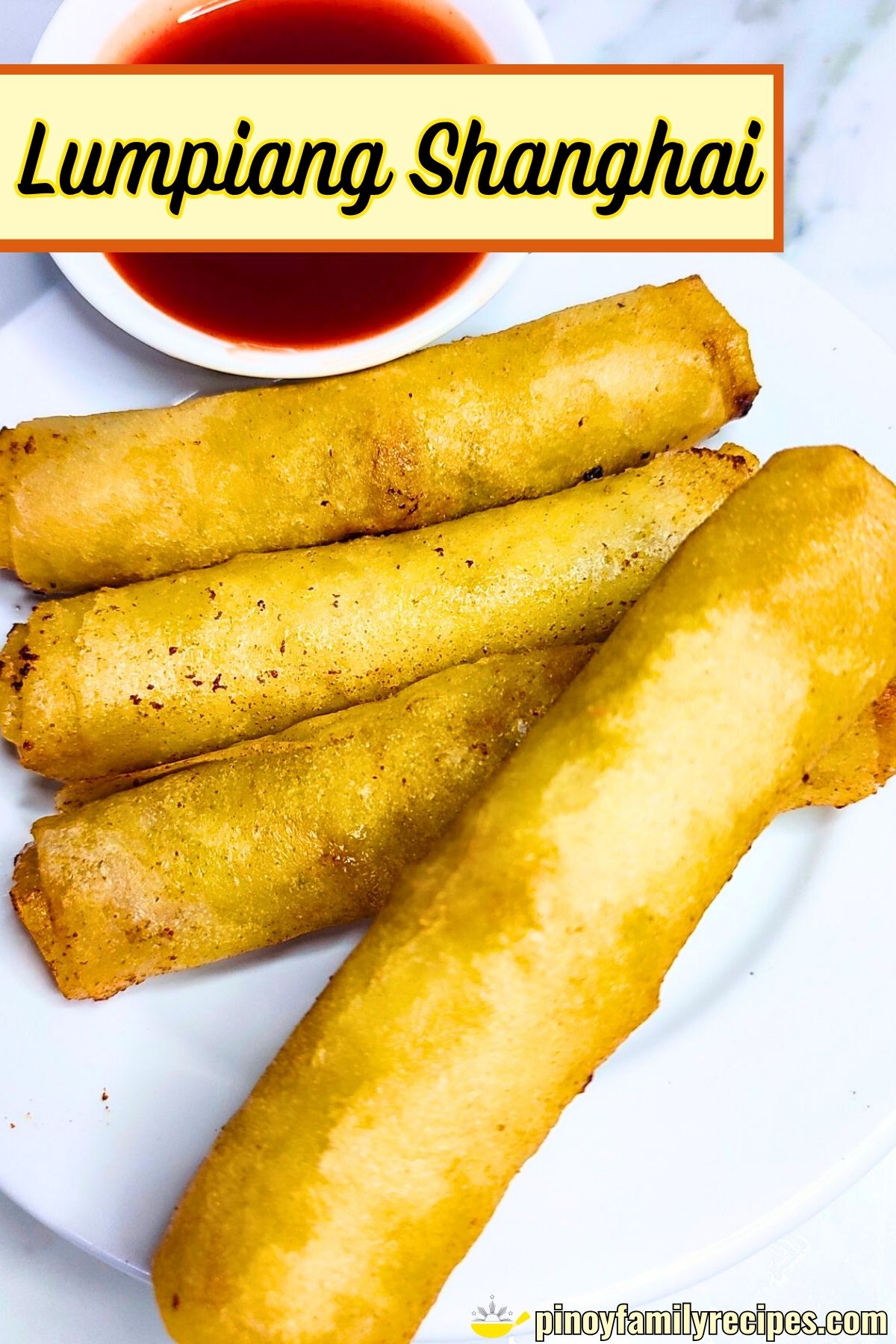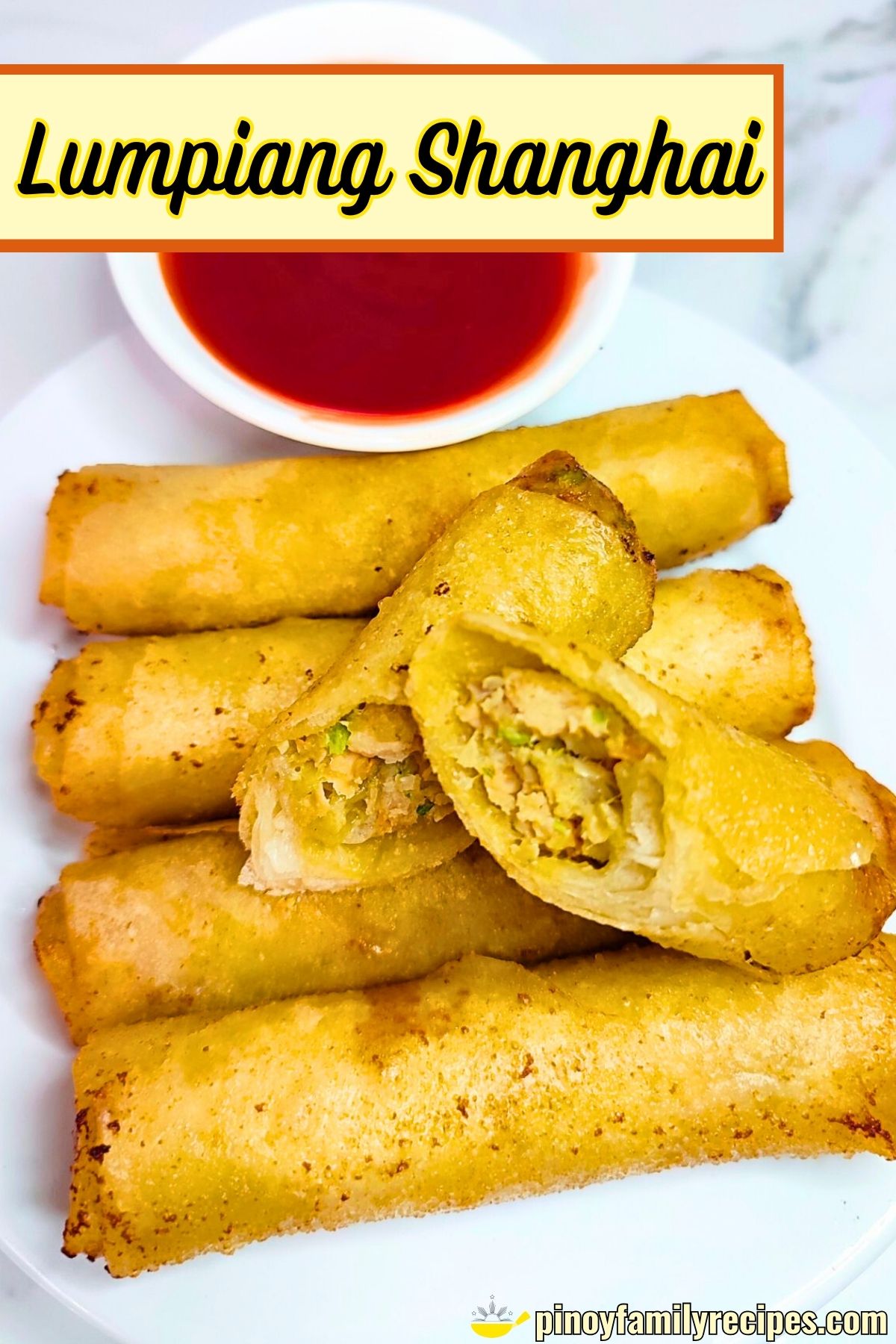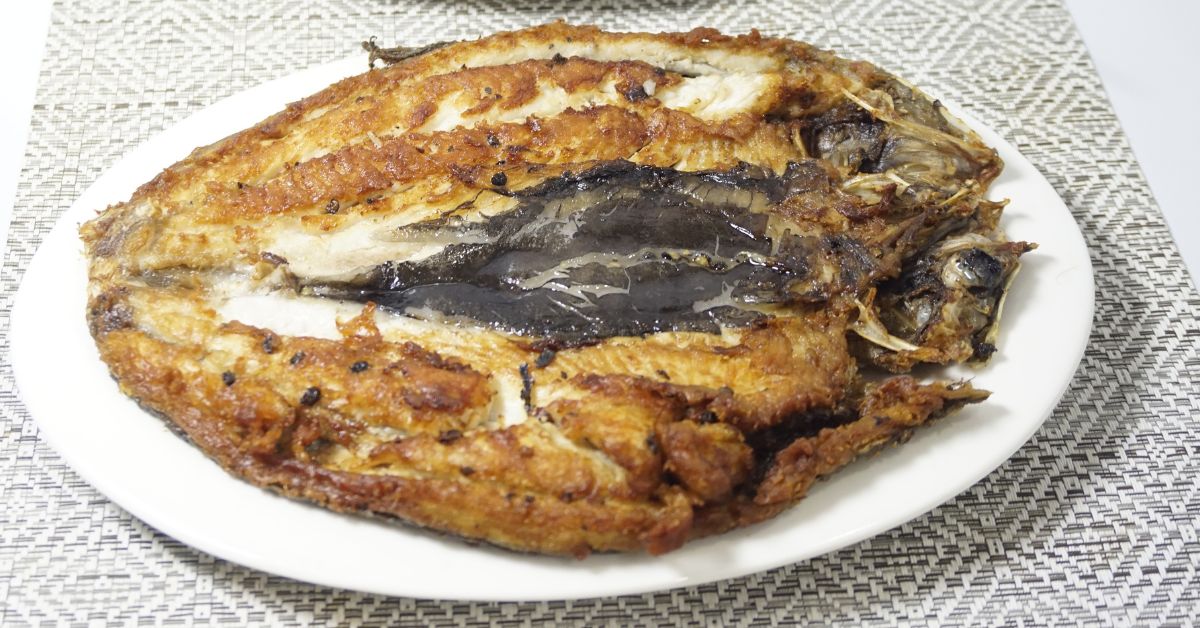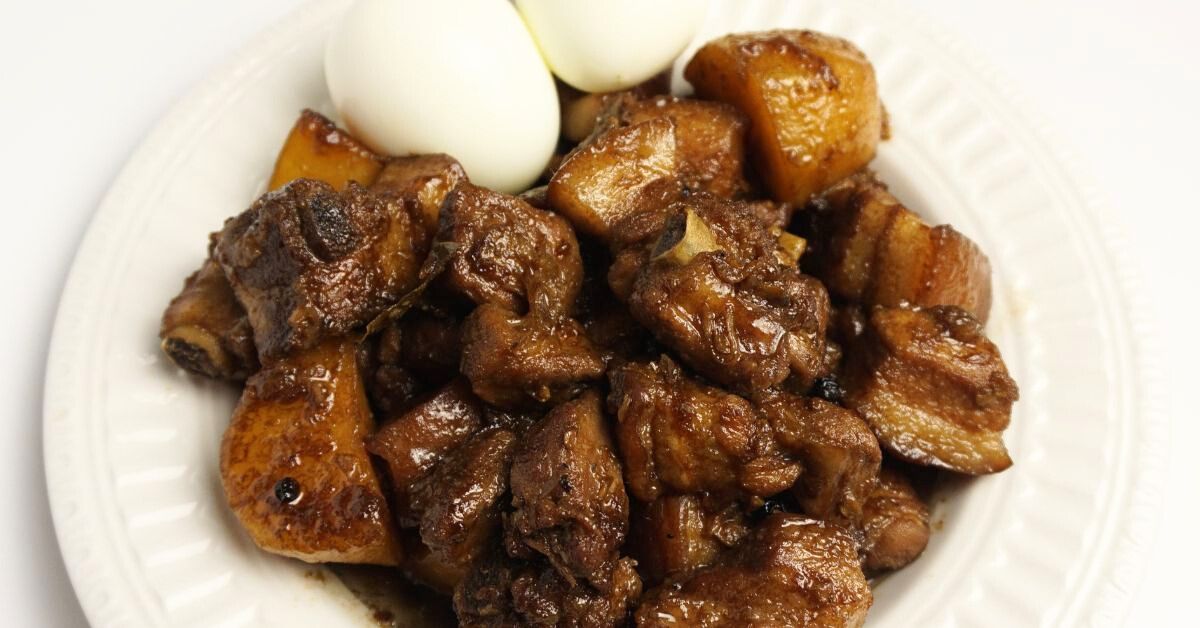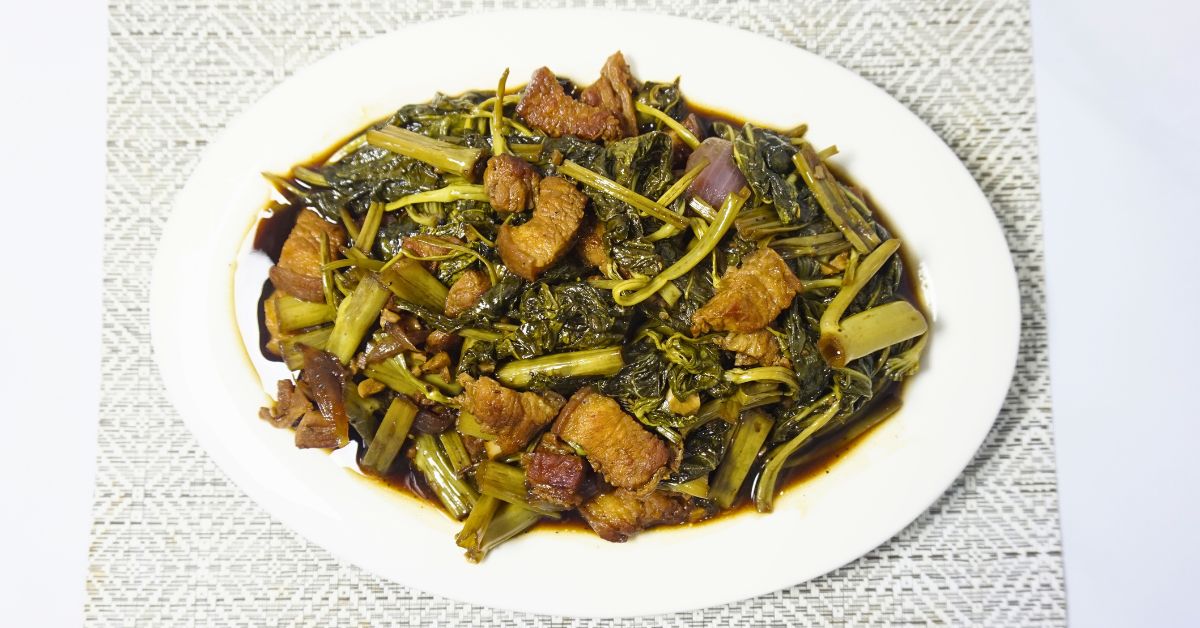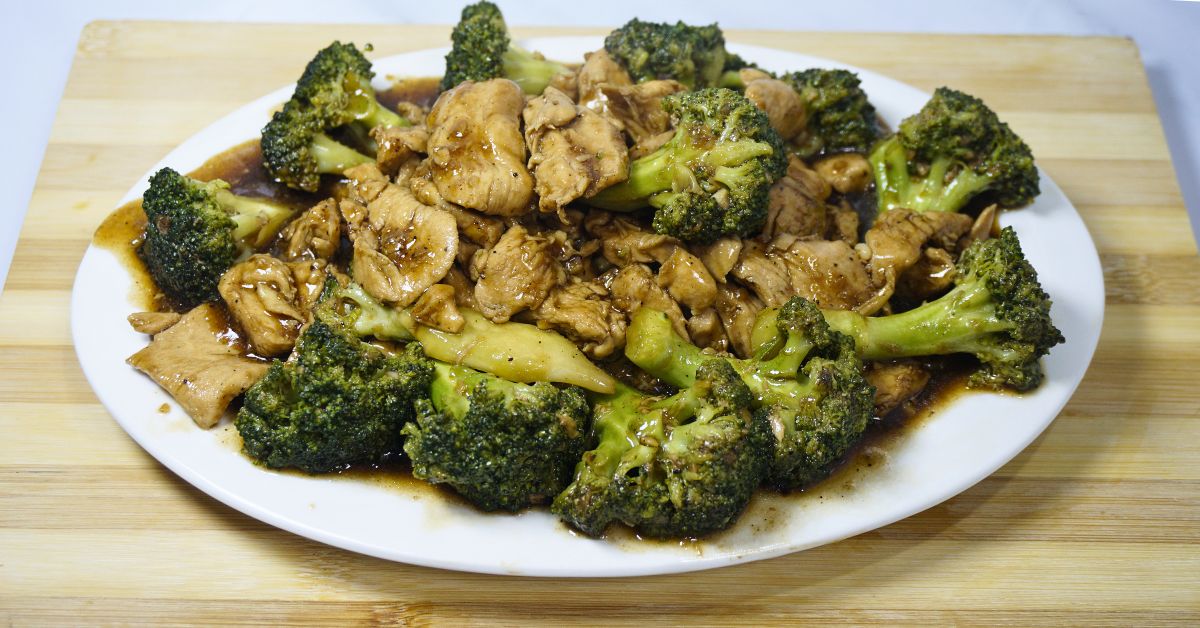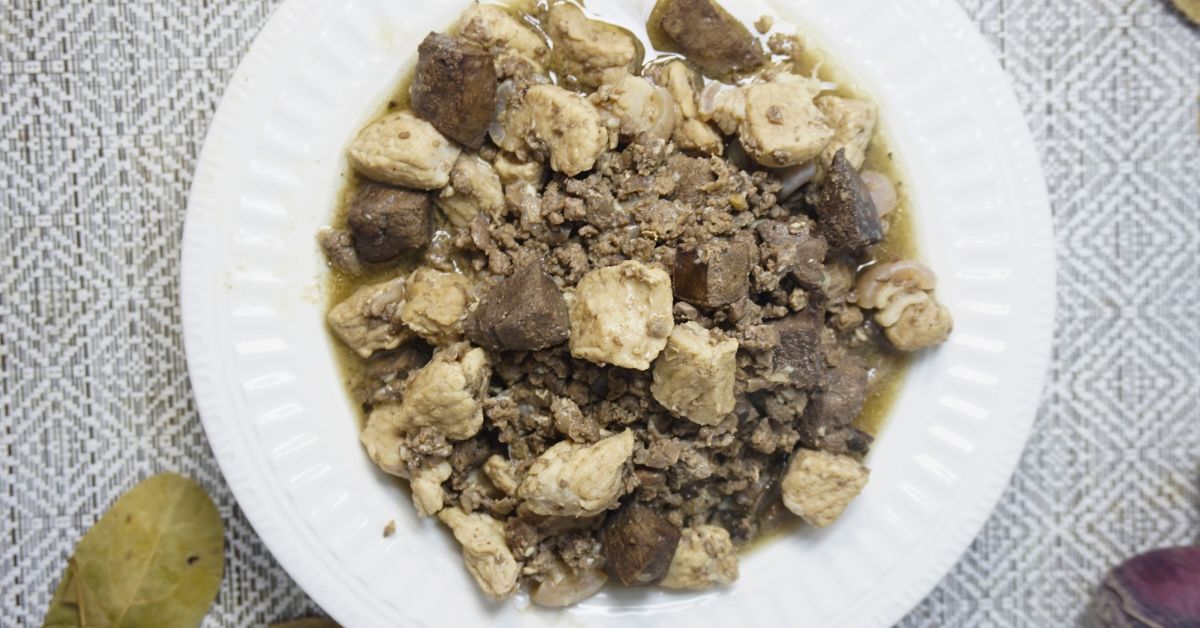
Oh, I remember this funny joke in the Philippines when foodies hear “Lumpiang Shanghai.”
Whenever we have food gatherings, my friends will always say, leave some for me to take home!
Believe it or not, it’s funny, but not surprising, because Lumpiang Shanghai is like a tiny bundle of happiness that adds joy to every family gathering.
It’s the go-to Filipino finger food, and guests always ask for a take (my guests actually). So whenever I include this on our food list during occasions, I always make sure to add extra pieces for the takeout.
But here’s the thing – you don’t need to wait for the next family event to enjoy Lumpiang Shanghai. Next time you’re cooking up some veggies, why not add a side of Lumpiang Shanghai? It’ll make your meal complete and add a delicious twist to your usual fare!
Wondering how to do it? Well, let me share with you these easy steps on how to make your own Lumpiang Shanghai.
Trust me, I do this weekly. I often have these stored in my freezer, ready to cook!
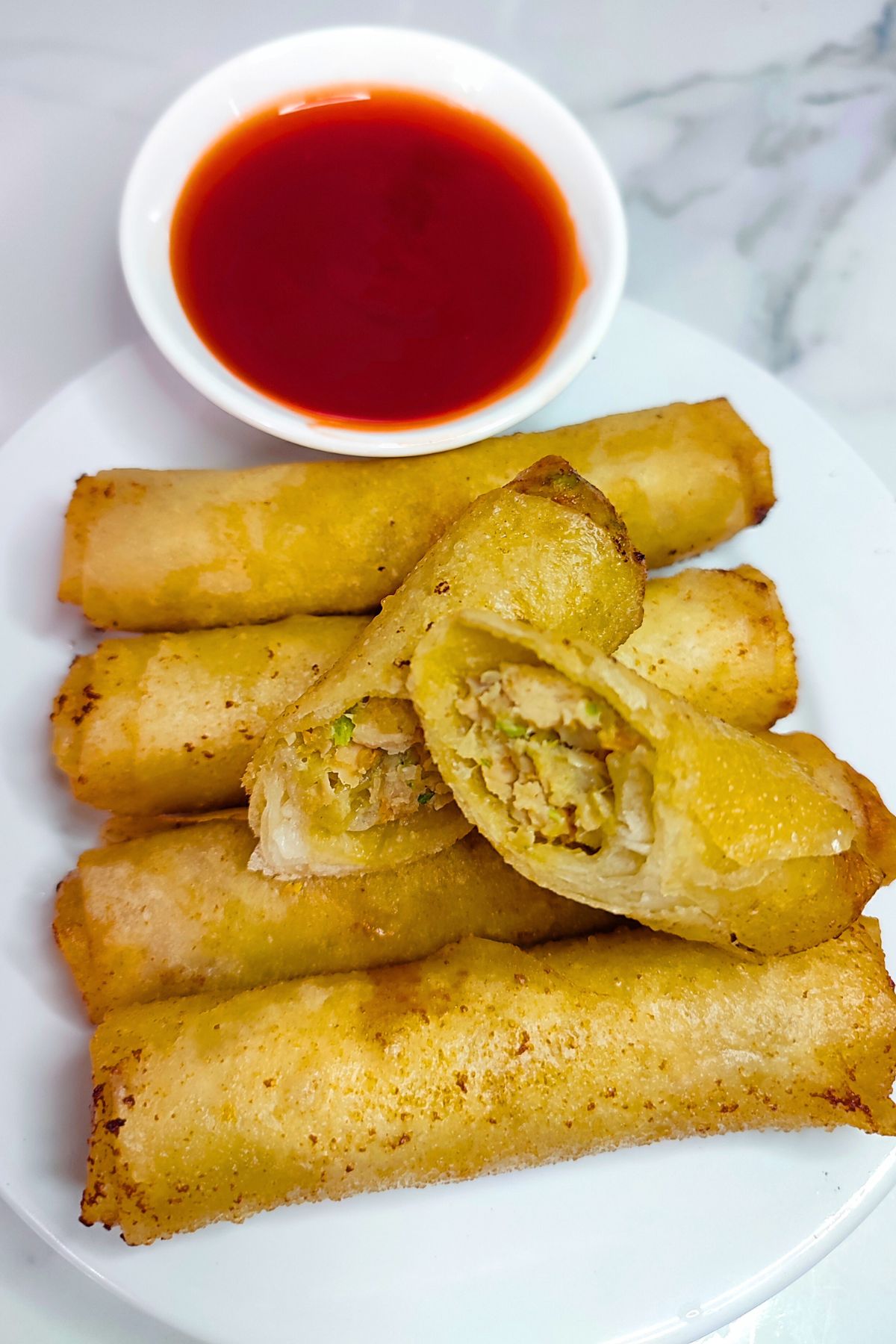
Are lumpia and egg roll the same?
You might’ve heard people call Lumpiang Shanghai a Filipino egg roll and wondered why that is especially since there’s no egg in it. Well it’s mostly because it looks and cooks like the egg rolls you usually see in Chinese takeout menus. It’s got a meaty filling wrapped in a thin wrapper then deep-fried until crispy—just like an egg roll.
Even though our lumpia is actually closer to a spring roll because of the thinner wrapper people still call it an egg roll when talking to folks who aren’t familiar with Filipino food. It’s just an easier way to explain what it is. So even if there’s no egg involved the name kind of stuck when sharing it outside the Philippines.
Where to Buy Lumpia Wrapper?
Here in the Philippines, it is easy to grab some of those lumpia wrappers from the local market. You can also find them in grocery stores.
And, you can also make one at home! If you are the type of home chef that wants to use everything from scratch, you can make your own lumpia wrapper at home using only two ingredients!
Yes, just two ingredients – water and flour! All you have to do is mix them into a smooth batter, spread a thin layer on a hot pan, and voila! Your homemade lumpia wrapper is ready to roll. It’s a fantastic way to add that extra personal touch to your Lumpiang Shanghai.
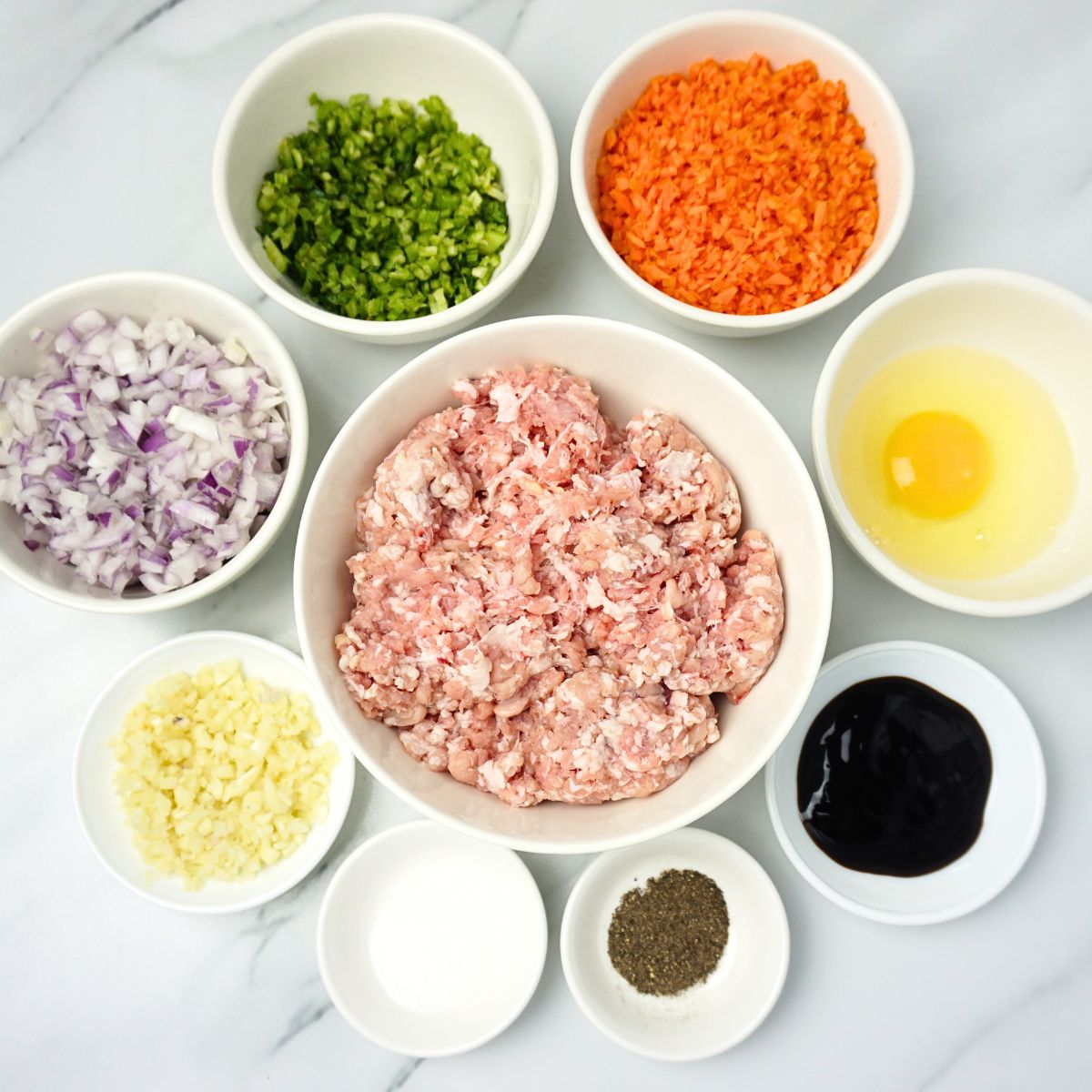
Lumpiang Shanghai Ingredients
- Ground pork: Adds savory flavor and a satisfying texture to the filling.
- Carrots: Brings a subtle sweetness and vibrant color to the Lumpiang Shanghai.
- Celery: Provides a refreshing crunch and a hint of herbal notes to enhance the overall taste.
- Garlic: Infuses the filling with a rich, aromatic flavor, adding depth to each bite.
- Onion: Contributes a sweet and savory taste, complementing the other ingredients.
- Eggs: Acts as a binding agent, ensuring the filling holds together and cooks to perfection.
- Oyster Sauce: Introduces a umami-rich, savory flavor that enhances the overall taste profile.
- Salt and Pepper: Seasoning essentials that balance and elevate the flavors of the entire dish
How To Prepare The Lumpiang Shanghai Filling
Prep Your Ingredients
Finely chop garlic and onion.I used a food processor to chop or grate carrots quickly.Dice celery into small pieces.Crack eggs into a bowl.
Combine in Mixing Bowl
In a bowl, mix ground pork, chopped garlic, chopped onion, processed carrots, diced celery, and beaten eggs. The food processor does wonders for an even texture.
Season with Oyster Sauce, Salt, and Pepper
Add oyster sauce generously, then season with salt and pepper. Mix thoroughly to ensure every bit is seasoned just right.
Blend it Well
Ensure all ingredients are thoroughly blended, creating a harmonious mixture.
Let it Rest
Allow the filling to rest for a few minutes. I put the mixture in the chiller for at least 1 hour to let everything sit. This short break lets the flavors meld for an even more delightful taste.
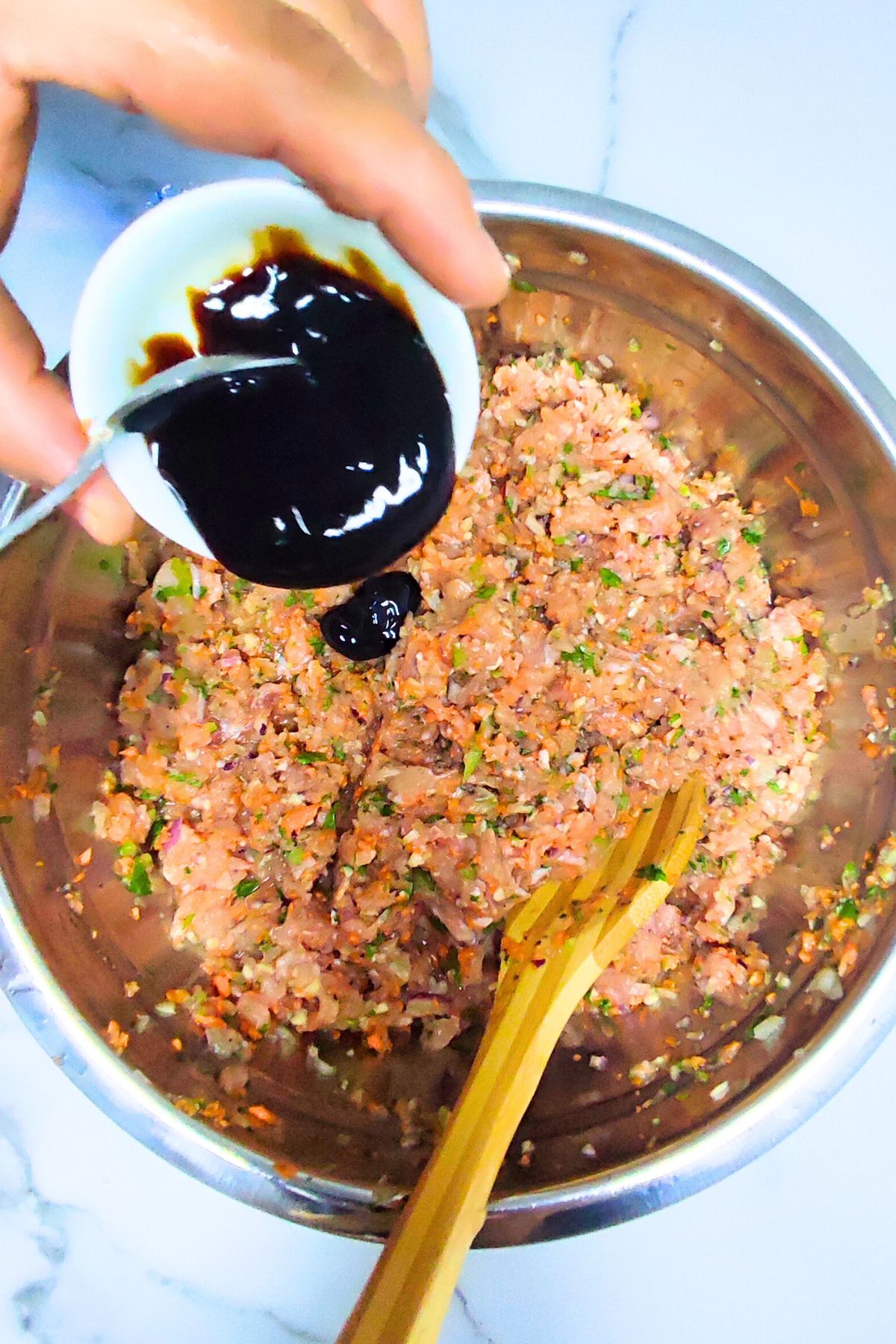
Ways to Cook Lumpia
Cooking lumpia can be done in different ways depending on how you like them. Here are some tasty methods you can try:
Deep-Frying
Heat a generous amount of oil in a pot or pan. Fry the lumpia until they turn golden and crispy. This gives the classic crunch that makes lumpia so satisfying.
Pan-Frying
For a less oily option, pan fry the lumpia in a bit of oil. Turn them occasionally to ensure even browning on all sides. This method keeps them crispy with a little less grease.
Air-Frying
If you’re avoiding oil, use an air fryer. Arrange the lumpia in a single layer and cook until golden and crisp. It’s a cleaner, healthier method that still delivers that crunchy texture.
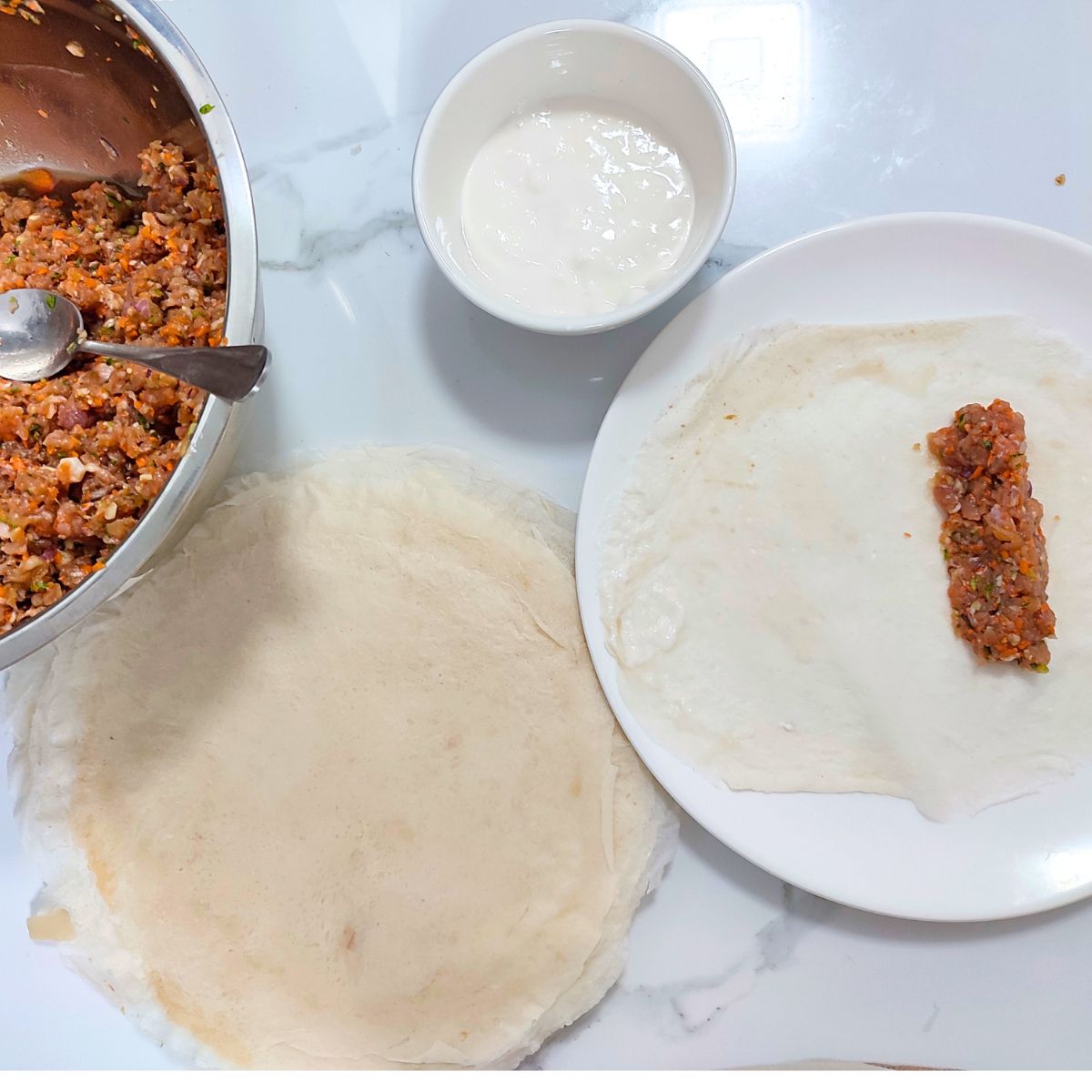
How To Keep Lumpiang Shanghai Crispy?
Wrap it tightly for a crispier result
The key to crispy Lumpiang Shanghai starts with proper wrapping. Make sure each roll is tight and sealed well. Avoid loose ends or air pockets, as they can trap moisture and lead to soggy lumpia during frying.
Preheat your oil properly
Before frying, ensure your oil is hot enough. Test it by dropping a small piece of wrapper into the oill If it sizzles immediately, you’re good to go. Hot oil helps create a crisp outer layer and prevents the lumpia from absorbing too much oil.
Avoid overcrowding the pan
Fry in batches to maintain the oil temperature and allow even cooking. Overcrowding the pan causes the oil to cool down, which can lead to greasy and unevenly cooked lumpia.
Serve immediately
Lumpiang Shanghai is best enjoyed fresh out of the pan. The longer they sit, the more they lose their crunch. Serve them hot for the best texture and flavor.

How To Store Uncooked Lumpia
Storing uncooked Lumpiang Shanghai is a smart move for planning ahead. Here’s a simple guide on how to store them:
Prep for the Fridge
If you’re not planning to cook your Lumpia right away, cover the uncooked rolls with plastic wrap or place them in an airtight container. This prevents them from drying out in the fridge.
Separate Layers
If you need to stack the uncooked Lumpia, use parchment paper between layers. This prevents them from sticking together, ensuring they stay in perfect shape for cooking.
Label and Date
It’s always a good idea to label the container with the date of preparation. This way, you can keep track of freshness and use them within a reasonable timeframe.
Freeze for Longevity
Store uncooked Lumpia in the freezer for longevity. Freezing helps maintain the quality of the ingredients and the wrappers. This is especially useful if you plan to cook them beyond a few days.
Use Within a Reasonable Timeframe
Aim to use your frozen uncooked Lumpia within a reasonable timeframe for the best results. While freezing preserves freshness, it’s still good to enjoy them within a timeframe that maintains their optimal quality.
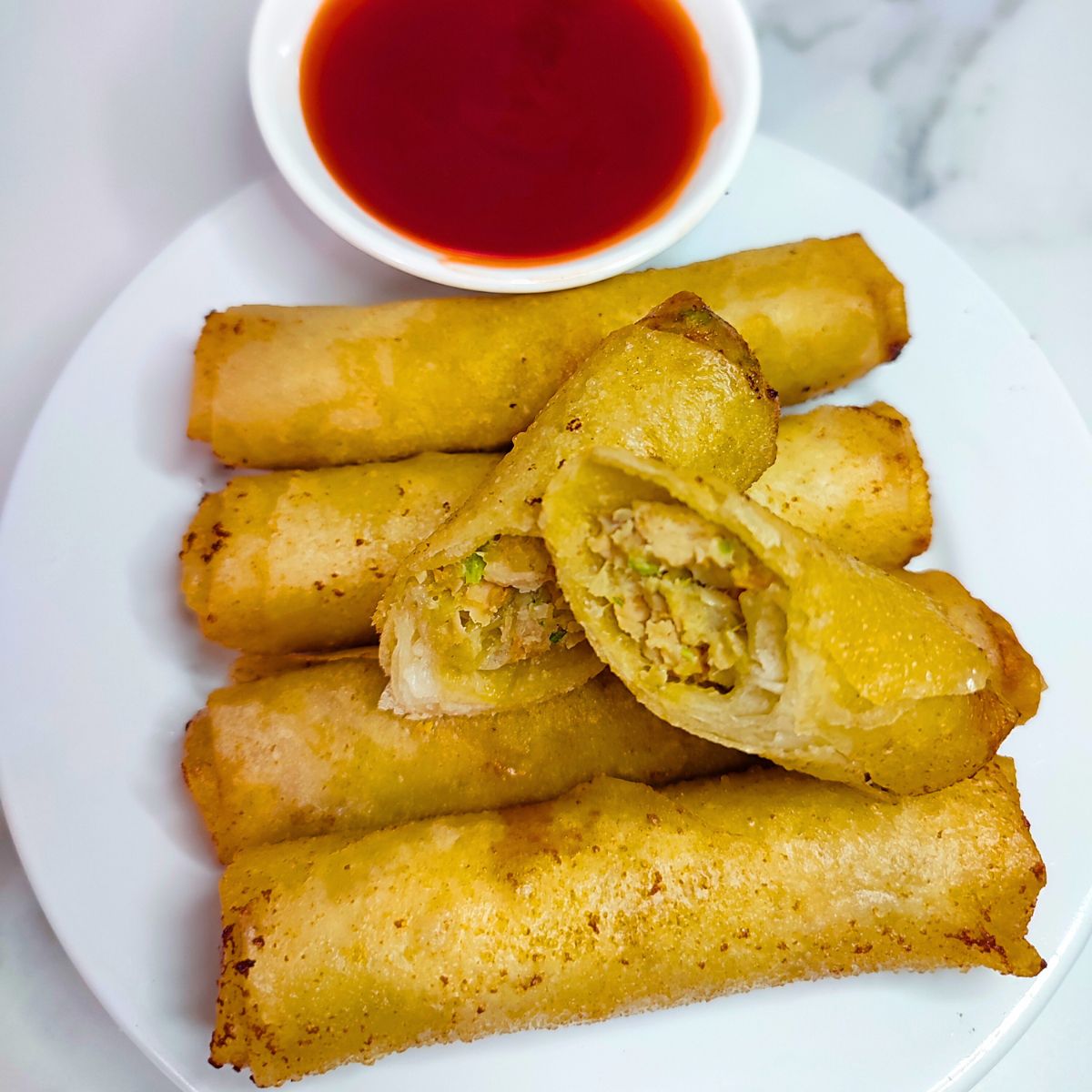
How To Reheat Leftover Shanghai
Reheating leftover Lumpiang Shanghai is easy, and you can bring back that crispy goodness with a few simple steps. Here’s a quick guide:
Oven or Toaster Oven
- Preheat your oven or toaster oven to around 350°F (180°C).
- Place the leftover Lumpia on a baking sheet, ensuring they are not too crowded.
- Reheat for about 10-15 minutes or until they become crispy and heated through.
Air Fryer
- Preheat your air fryer to around 350°F (180°C).
- Arrange the leftover Lumpia in the air fryer basket, making sure there’s space between each piece.
- Air fry for about 5-8 minutes or until they achieve the desired crispiness.
Skillet or Pan
- Heat a non-stick skillet or pan over medium heat.
- Place the leftover Lumpia in the skillet, turning occasionally to ensure even heating.
- Reheat for approximately 5-10 minutes or until they are crispy and warmed through.
Microwave (if in a pinch)
- While not the best for maintaining crispiness, the microwave can be used for a quick reheating.
- Place the Lumpia on a microwave-safe plate and cover them with a damp paper towel.
- Microwave in short intervals, checking after each, to avoid overcooking. This method is more suitable for a softer texture.
Frequently Asked Questions
Yes, while pork is the traditional choice, you can also use ground chicken, beef, or a combination of different meats. Some recipes even use seafood like shrimp.
Yes, vegetarian versions can be made using tofu, mushrooms, and a variety of vegetables like carrots, cabbage, and bean sprouts as the filling.
Lumpiang Shanghai is commonly served with a sweet and sour sauce, banana ketchup, or a garlic-vinegar dipping sauce.
While often served as an appetizer or party food, Lumpiang Shanghai can also be part of a main meal, especially when served with rice and a vegetable side dish.

Lumpiang Shanghai
Ingredients
- 1 piece Carrots large (finely chopped)
- 2 pieces Celery (finely chopped)
- 6 cloves Garlic (minced)
- 2 pieces Onions large (finely chopped)
- 500 grams Ground Pork
- 1 piece Egg
- 3 tbsp Oyster Sauce
- 1/2 teaspoon Black Pepper (ground)
- 1/2 teaspoon Salt
- 32 pcs Lumpia Wrappers / Spring Roll Wrappers
- 500 ml Cooking Oil (for frying)
Instructions
If you have a food processor, dump all the vegetables (carrots, celery, onion and garlic) in the food processor, if none:
- Start by finely chopping or grating 1 large carrot.
- Chop 2 pieces of celery into small pieces.
- Mince 6 cloves garlic.
- Finely chop 2 pieces of onions.
- In a large bowl, combine 1 kg of ground pork with the chopped vegetables.
- Add 1 beaten eggs to the mixture.
- Stir in 3 tablespoons of oyster sauce for flavor.
- Season the mixture with salt and pepper to taste.
- Mix all the ingredients thoroughly until well combined.
- Place a tablespoon of the filling near one corner of the lumpia wrapper. Roll tightly halfway, fold the sides in, and continue rolling. Seal the edge with a dab of water with cornstarch mixture or a beaten egg to prevent it from opening during frying.
- Heat the oil to 350°F (175°C). If the oil is too hot, the lumpia will brown too quickly on the outside while the inside remains undercooked. If it's not hot enough, the lumpia will absorb too much oil and become greasy.
- Fry the lumpia in batches to avoid overcrowding the pan, which can lower the oil temperature and result in uneven cooking.
- After frying, place the lumpia on a paper towel-lined plate or a wire rack to drain excess oil. This keeps them crispy.
- Serve Lumpiang Shanghai with your favorite dipping sauce, such as sweet chili sauce, vinegar with garlic, or ketchup.
Watch this!
Notes
- Lumpiang Shanghai can be made ahead of time and frozen. Lay them out on a baking sheet to freeze individually before transferring them to a freezer bag. You can fry them directly from frozen; just add a few extra minutes to the frying time.
- You can customize the filling with different proteins like shrimp, fish, or tofu for a vegetarian option.
- If you’re new to wrapping lumpia, you might want to practice with a few wraps to get the hang of it. It’s important that the filling is well-distributed and the wrappers are sealed properly.
